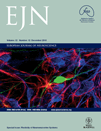Most dietary pattern analyses in southern Europe have relied on a priori food approaches using Mediterranean-style diet indexes. These methods may not reflect the current population's food consumption.
To assess the association of a posteriori dietary patterns with acute myocardial infarction (AMI) and cardiovascular risk markers in the general adult population of Porto, Portugal.
A population-based case-control study was conducted. Information was collected by trained interviewers. Diet was assessed with a validated 82-item food frequency questionnaire.
Cases were patients consecutively hospitalized for an incident non-fatal AMI (n=820), and controls were individuals free of previous AMI selected from the hospitals' catchment area (n=2,196).
Dietary patterns, representing mutually exclusive clusters of individuals, were identified by multivariate finite mixture models among controls. Odds ratios (OR) and their 95% confidence intervals (CIs) were obtained from unconditional logistic regression, with adjustment for main confounders.
In comparison to women with a “healthy” dietary pattern, those with a “low fruit and vegetables” pattern and a “red meat and alcohol” (also characterized by lower intake of dairy products and vegetables) pattern showed a higher risk of AMI (OR 1.85, 95% CI 1.01 to 3.39 and OR 1.91, 95% CI 1.17 to 3.12, respectively). Female controls with the “red meat and alcohol” pattern also had a higher total to high-density lipoprotein cholesterol ratio. In comparison to men with a “healthy” pattern, those with the “red meat and alcohol” pattern, similar to the counterpart found in women, were more likely to experience an AMI (OR 1.98, 95% CI 1.35 to 2.92); male controls with this pattern had higher diastolic and systolic blood pressure, C-reactive protein, and uric acid levels.
A dietary pattern with lower fruit and vegetable intakes in women, and a pattern characterized by higher consumption of red meat and alcohol (and lower of dairy products and vegetables) in both sexes, were associated with an increased risk of AMI and adverse cardiovascular risk profiles.
These findings highlight the importance of sustained recommendations for fruit and vegetable intake and cautious guidance on consumption of alcoholic beverages, which clusters with less healthy dietary patterns of men and women.
Read Full Article (PDF)

























